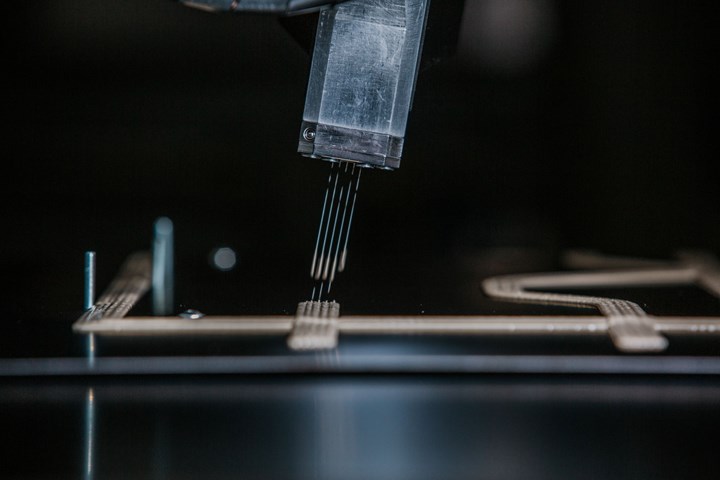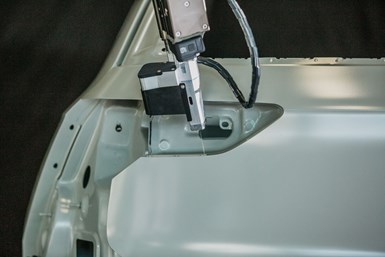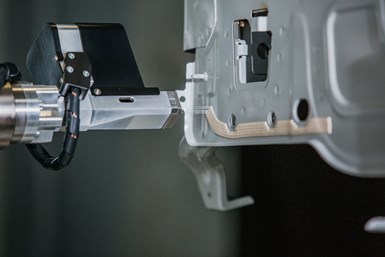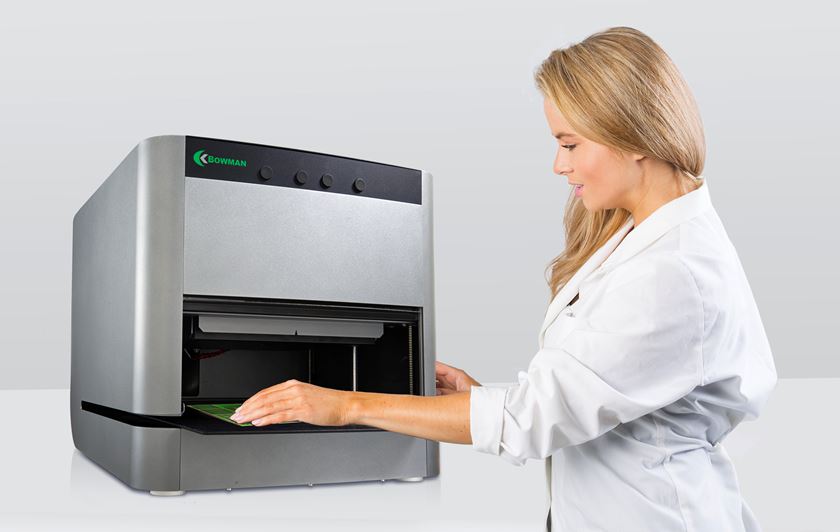Flexible Paint Applicator Automates Car Sealing Process
Dürr’s new EcoSealJet Pro applicator enables process improvements and material savings that are good for both budgets and the environment.
#automotive
Dürr’s new EcoSealJet Pro applicator is designed to fully automate car manufacturing painting processes that previously had to be done manually. Photo Credit: Dürr
Dürr Systems Inc. (Southfield, Michigan) has developed a solution to further increase the level of automation and significantly reduce the need for manual intervention in the car manufacturing painting process. While many stages in this process are already highly automated, sealing is still performed manually for hard-to-reach car body parts. Dürr’s new EcoSealJet Pro applicator is designed to fully automate this process. According to the company, the applicator and associated process improvements enable maximum precision and consistent quality, leading to material savings that are good for both budgets and the environment.
The new EcoSealJet Pro applicator is designed for use wherever automation previously reached the limits of its capabilities. Dürr says the applicator is ideal not only for hard-to-access areas, such as in the engine compartment or headlight housings, but also for those areas where automatic PVC application must contend with unusual contours, holes, studs and other obstacles.
Precise application in hard-to-reach areas
The EcoSealJet Pro applicator enables precise application of materials in areas that are hard to reach. Photo Credit: Dürr
The clearance and work angle of the robot-guided EcoSealJet Pro applicator can be variably adjusted to easily access difficult body parts. Its needles are activated individually so that the applicator can apply sealant to the body with consistent precision and quality. Each needle can apply the material in jets or individual drops through the application nozzles. The robot speed and the amount of material determine the variable, high-frequency needle activation, which the company says makes the applicator extremely flexible. It reportedly can be used for seam geometries of different densities and widths that exhibit a border with high edge definition and no overspray.
Precise application and the ability to adjust material thickness as required ensures no sealant waste, according to Dürr. Additionally, individual needle activation prevents material doubling where the seams join, which results in reduction in material use. The company says this is an advantage that should not be underestimated, as reduced material thickness impacts not only the cost but leads to lower overall vehicle weight. Since the new applicator can work around add-on parts, studs and holes, masking and cleaning are said to become obsolete, saving users both time and material. These downstream processes can therefore be reduced or eliminated entirely.
Learning algorithms increase effectiveness
An increased level of automation in sealing is a real benefit, Dürr says — not only for workstation ergonomics but for cost efficiency and environmental protection. Process optimization is also an important factor, and it is supported by permanent monitoring of individual components such as pumps, temperature controls, dosing units or valves. In addition, Dürr says the applicator relies on artificial intelligence (AI) to improve manufacturing processes. The company’s DXQequipment.analytics software package analyzes machine data, detects quality problems in real-time and optimizes maintenance requirements. This means that future predictions — for example, about a product fault or a plant component needing maintenance — will become more and more precise over time. Intelligent machine learning algorithms support maintenance, which the company says results in the highest possible plant availability.
RELATED CONTENT
-
NADCAP Scanner Provides Fully Digital Production, Automated Certification Management
The scanner technology aims to minimize errors, inefficiencies and vulnerabilities that cause challenges for the industry.
-
Modular, Automated Immersion Cleaning System
Cleaning Technologies Group’s RBS Modular System is a dedicated inline process that reportedly includes a wash, rinse, ultrasonic wash, ultrasonic rinse, heated blow off and a final vacuum drying system.
-
Automated Powder Coating System
Spray-Tech/Junair designs and manufactures complete turnkey automated powder coating systems that meet any need.



















